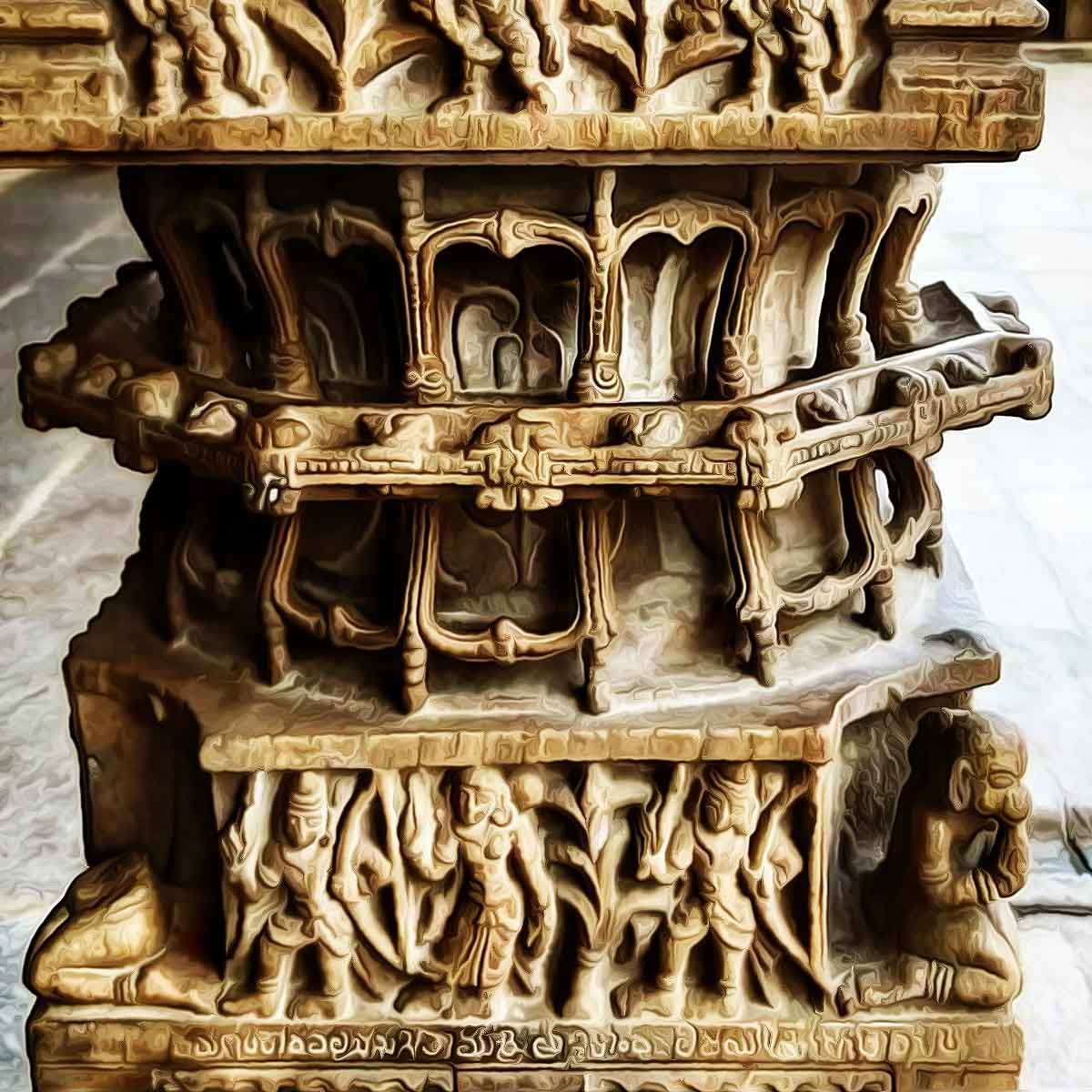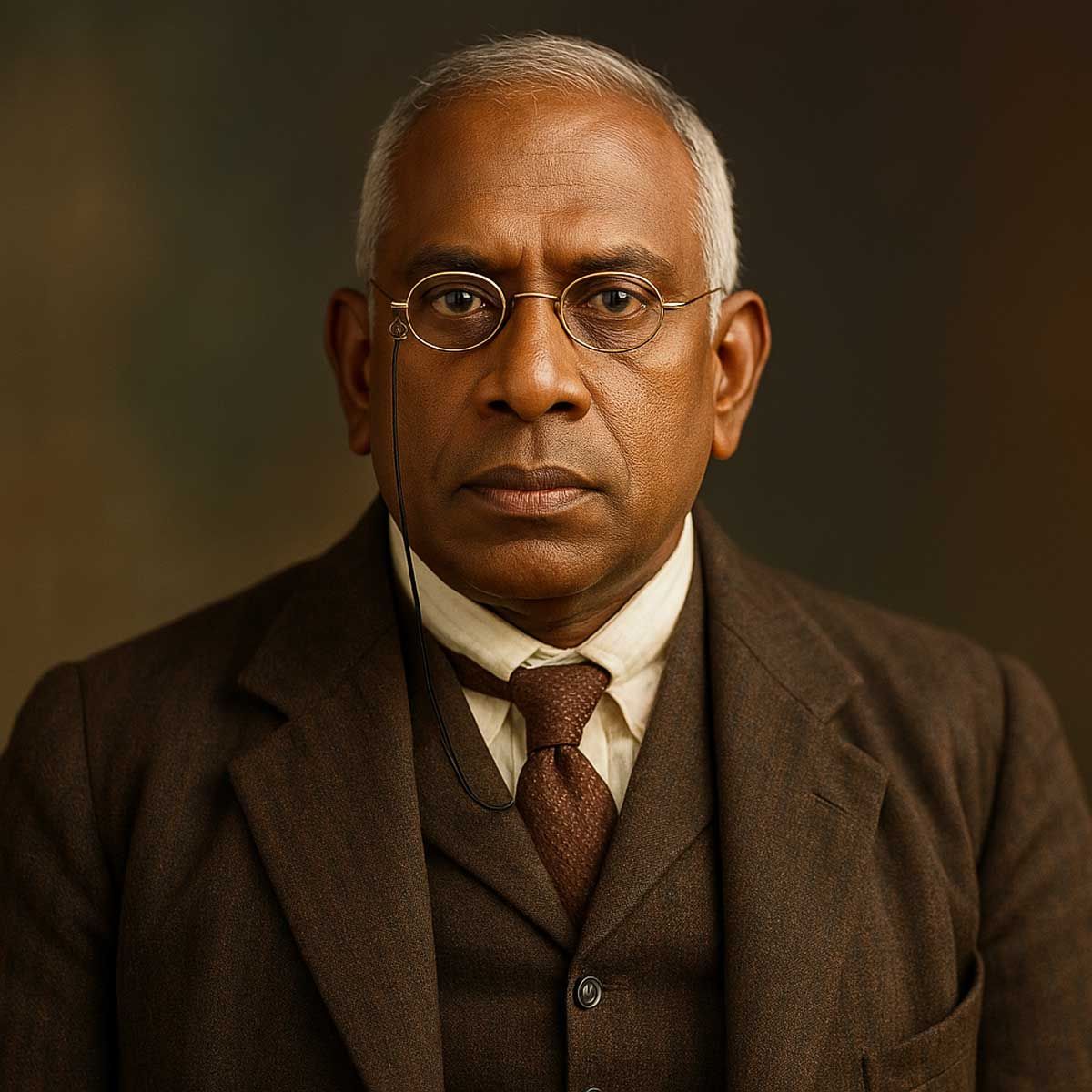More Coverage
Twitter Coverage
Satyaagrah
Written on
Satyaagrah
Written on
Satyaagrah
Written on
Satyaagrah
Written on
Satyaagrah
Written on
Join Satyaagrah Social Media
"Your sacred space is where you can find yourself again and again": Experience divine spirituality and history at Melukote's Cheluvanarayana Swamy Temple, the millennium-old Vishnu shrine during the divine rituals and captivating Vairamudi Festival

Nestled in the heartland of Mandya district in Karnataka, India, lies a divine place of worship named Cheluvanarayana Swamy Temple. Also known by the moniker of Thirunarayanapura, this temple is perched upon rocky terrains, fondly called Yadugiri or Yadavagiri, which provide a magnificent overview of the verdant Kaveri valley. Lord Vishnu, a deity revered in various forms globally, finds a dedicated space here, making this temple an essential pilgrimage site for Vishnu followers. The temple is conveniently accessible, standing about 156 kilometers away from Bangalore and approximately 48 kilometers from Mysore.
Here are some essential details for your visit to Cheluvanarayana Swamy Temple: - Opening Hours: 7.30 AM to 1.30 PM, 4.00 PM to 6.00 PM, and 7.00 PM to 8.00 PM. - Entry Fee: No charge - Photography: Not allowed to maintain the sanctity of the temple. - Estimated Visit Duration: Around one hour. - Ideal Time to Visit: The months between October and February provide a pleasant climate for visitors. - Location: Situated at Pandavapura Taluk, Mandya Dist, Melukote – 571431.
|
A Glimpse into the Historic Roots of Cheluvanarayana Swamy Temple
With a lineage spanning over a millennium, Cheluvanarayana Swamy Temple holds significant historical and spiritual relevance. The temple's antiquity is evident in the intricate engravings that deck its structure, revealing fascinating snippets of the temple's storied past. One of the key highlights is the bas-relief on a column of the navaranga, featuring the name of Raja Wodeyar. Known as a devout worshipper of the temple's presiding deity, Raja Wodeyar was a frequent visitor to this temple.
A symbol of spiritual grandeur, the temple was showered with lavish endowments by the Wodeyar dynasty, the royal family of Mysore. The most prized possessions of the temple include a valuable assortment of jewels gifted by Mysore king Raja Wodeyar. The king generously bestowed upon the deity two golden crowns, known as Vairamudi or Vajramukuta and Krishnaraja-mudi. Furthermore, the temple also holds a third crown, whose age surpasses the other two, gifted by an anonymous devotee. Presently, all three crowns are safeguarded by the Government, brought to the temple for display only during special events.
The Vairamudi Festival stands out as one of these significant occasions when the crowns are unveiled and placed on the deities. Following this, a grand procession of the deities ensues, attracting more than 400,000 spectators annually. One intriguing ritual involves the main priest being blindfolded before the crowns' presentation, as it's believed that nobody should glimpse the crown until it adorns Tirunarayana, the main deity.
|
Exploring the Deity and Rituals of Cheluvanarayana Swamy Temple
Recognized as a prime pilgrimage site for Vaishnavas, this temple holds the title of an 'Abhimana Sthalam'. At its heart, the temple houses the idol of Narayana, an avatar of Lord Vishnu. This ancient temple, visited predominantly by Vishnu followers or Vaishnavites, was constructed in phases with notable contributions from the royals of Mysore. The Vairamundi Seva Festival, celebrated on a grand scale in March-April, includes a chariot procession that is a major crowd-puller.
Three deities are particularly revered in this temple:
Tirunarayana: The temple's chief deity is Lord Vishnu, also addressed as Tirunarayana or Cheluvaraya. Representing this main deity is the Utsavamurthy, a small metal idol. The idol, known as Sri Chelunarayana Swamy, was revered in different eras by different names such as Vedadri, Narayanadri, Yasavadri, idolized by respective figures like Lord Dattatreya, Balrama, and Krishna. In Kalyuga, it was idolized by Saint Ramanujacharya.
Ramapriya: As per mythological accounts, it's believed that Lord Rama paid a visit to this temple. This anecdote is not only mentioned in ancient texts but also reflected in the manuscripts preserved within the temple. According to legends, Lord Rama, accompanied by his sons Lav and Kush, offered floral tributes to the temple deities, leading to Cheluvanarayana Swamy being originally referred to as Ramapriya.
Bibi Nachiyaar: In an interesting turn of events, the Utsavamurthy, symbolizing the chief deity, was lost during a Mughal invasion, only to be found later by Ramanujacharya. The statue was in the possession of Bibi Nachiyaar, daughter of Mohammed Shah, who treated it as a toy. However, instead of using it for play, she was observed worshipping it. Following the recovery of the idol, Bibi Nachiyaar traveled from Delhi to Melukote in search of the idol, where she collapsed and died upon seeing it. Her spirit, in the form of a flame, is believed to have united with the idol. To honor her profound devotion, her idol was placed next to the feet of the main deity.
With more than one Brahmotsavam celebrated at the temple, it follows the Pancharatra Agama. The temple's popular offerings, known as 'prasadam,' include 'Thuni Thengol' and 'Puliyogare.'
Marvel at the Architecture of Cheluvanarayana Swamy Temple
The temple is a testament to brilliant craftsmanship, reflected in its awe-inspiring sculptures and pillars. Following the Dravidian Style of architecture, the temple complex includes a sizable pond built near the foothills, right next to the temple's main steps. This stone pond, shaped like a stepped well, features block-shaped stone steps with arched pillars where tourists can lean and rest. The temple's entrance, or 'Gopuram,' boasts a triangular tower, further enhanced by pillared structures, with another 'Gopuram' designed on top. The temple's outer walls house a pillared corridor, with the pillars featuring exquisitely carved sculptures.
The main sanctum, housing the primary deity, has a square structure. An interior pillared corridor further enhances the design of this main sanctum. The temple's roof is adorned with small structures resembling temples, a unique architectural feature of this shrine. Each of these mini-temples is decorated with beautifully carved sculptures of Hindu deities, positioned in all directions, believed to safeguard the temple from evil spirits.
Inscriptions within the temple indicate that the deity was also known as Ramapriya. The Utsavamurthi, a metallic idol used for processions and religious rituals, represents the deity Cheluvanarayana Swamy. As per legends, this idol was once lost but was later recovered by Sri The main priest is required to wear a blindfold when handling these crowns, as it is considered sacrilegious to look upon them before they are placed on the deity.
|
Melukote – A place of Historical and Spiritual significance
Melukote, a town nestled in the Mandya district of the southern Indian state of Karnataka, holds a special place in the spiritual heart of India. This historically-rich town, located roughly 51 kilometers from Mysore and about 133 kilometers from Bangalore, has established its reputation as a sacred site in South India. It is an integral part of the Pandavapura taluka, and it is renowned for the exquisite Cheluvanarayana Swamy Temple.
The historical narrative of Melukote is intertwined with the life of the influential spiritual teacher Ramanujacharya. After he was bestowed the title of 'rajguru' or the royal teacher of the Hoysala Empire, Ramanujacharya had a dream in which Lord Vishnu guided him to relocate to Melkote. Traditional accounts suggest that the reason for this journey was to seek the namam clay for the sacred Urdhva Pundra of Srivaishnavism, and Melkote was rich in this sacred clay.
Upon his arrival, Ramanujacharya discovered the holy clay, along with a statue of God, later enshrined as the deity Tirunarayana of Melkote. The consecration of the deity took place in the Bahudhanya year, during the Pushyamasa Shukla Paksha Chaturdashi, according to the Pancharatra agama rituals. Ramanuja spent three days in worship, followed by a kumbhabhishekham (ritual bathing of the deity), and he also recited the Tamil Vedas. This event led to the establishment of the Yadugiri Yathiraja Mutt, a monastery set up for a sanyasi (ascetic) to manage the temple affairs.
Melukote thus became a prominent spiritual hub for Brahmins, as it is believed that Saint Ramanuja resided here for twelve long years. This period shaped the town's spiritual landscape and made it a focal point of interest for numerous visitors.
Explore the Spiritual Wonders of Melukote
Cheluvanarayana Swamy Temple: Undoubtedly the most famous temple in Mandya, it is dedicated to Lord Cheluva-Narayana Swamy. It has also served as a spiritual retreat for the Kings of Mysore over the years. This temple is situated atop the Yadugiri hills and is a place of worship dedicated to Lord Vishnu. For people of the Vaishnava community, this temple is considered an extremely important shrine.
The temple boasts a marvelous collection of jewels, including three crowns that were presented to the temple and are kept safe to be displayed only during special occasions. The temple's Goddess is Yadugiri Nachiyar, and it is believed that Lord Rama visited and worshipped at this sacred temple.
An annual festival called Vairamudi Sevam, celebrated between March and April, is one of the key events at the temple. During this grand celebration, the deity is adorned with a diamond crown and taken out for a procession, attracting thousands of devotees.
Yoga Narasimha Temple: This renowned temple is located at the hill's summit. The shrine is dedicated to Lord Yoga Narasimha and is a major attraction for visitors and locals alike. The King of Mysore had generously presented a gold crown to the Lord, further enhancing the temple's spiritual and historical significance.
Melkote Temple Wildlife Sanctuary: This wildlife sanctuary is another feather in Melkote's cap, initially serving as a sanctuary for wolves. Over the years, it has evolved to include leopards, jungle cats, langurs, bonnet macaque, and pangolins. With over 200 species of birds, it is also a bird watcher's paradise, offering a plethora of delightful opportunities to nature enthusiasts.
Apart from these, the town is known for the impressive Yoganarasimha Swamy Temple. One of the main attractions at this temple is the step-well and the pond called Kalyani. This architectural wonder, dating back to the Hoysala dynasty, attracts both pilgrims and history buffs. As the narratives go, this temple was once a place of worship for Lord Rama, Krishna, and Balrama during different periods. The stories connected to this temple hold a special place in the beliefs of the devotees.
|
Festivals and Sanctuaries in Melkote
Vairamudi Brahmotsava: This festival, celebrated over thirteen days in March, is among the most anticipated events at Melkote. The name 'Vairamudi' refers to a diamond-studded crown, which is the festival's highlight. The crown is used to decorate Lord Cheluvanarayan, and a grand procession is organized that lasts for all thirteen days of the festival. This event draws up to 400,000 devotees from across the country, adding to the overall spiritual grandeur. The Vairamudi was originally adorned by the Wodeyars, the royal family of Mysore.
Melkote Wildlife Sanctuary: The Melkote Wildlife Sanctuary, established in 1974, primarily served as a refuge for wolves. Over time, the sanctuary expanded its inhabitants to include jungle cats, leopards, and several other wild animals, transforming into a vibrant ecosystem. The sanctuary, about 10 km in area, has become a favorite spot for bird watchers, home to numerous bird species.
Learning Sanskrit at the Pathshala or Library
For those interested in learning about the ancient Indian language Sanskrit, the Academy of Sanskrit Research is a must-visit. Established in 1854, this centuries-old institution is one of its kind in the state. The library, situated within the same premises, houses a rich collection of Vedic, English, Kannada, and Sanskrit texts and literature, offering a deep dive into India's linguistic heritage.
 Support Us
Support Us
Satyagraha was born from the heart of our land, with an undying aim to unveil the true essence of Bharat. It seeks to illuminate the hidden tales of our valiant freedom fighters and the rich chronicles that haven't yet sung their complete melody in the mainstream.
While platforms like NDTV and 'The Wire' effortlessly garner funds under the banner of safeguarding democracy, we at Satyagraha walk a different path. Our strength and resonance come from you. In this journey to weave a stronger Bharat, every little contribution amplifies our voice. Let's come together, contribute as you can, and champion the true spirit of our nation.
 |  |  |
| ICICI Bank of Satyaagrah | Razorpay Bank of Satyaagrah | PayPal Bank of Satyaagrah - For International Payments |
If all above doesn't work, then try the LINK below:
Please share the article on other platforms
DISCLAIMER: The author is solely responsible for the views expressed in this article. The author carries the responsibility for citing and/or licensing of images utilized within the text. The website also frequently uses non-commercial images for representational purposes only in line with the article. We are not responsible for the authenticity of such images. If some images have a copyright issue, we request the person/entity to contact us at This email address is being protected from spambots. You need JavaScript enabled to view it. and we will take the necessary actions to resolve the issue.
Related Articles
- ‘HRCE Department is bound to protect temple properties and their belongings’: Madras HC lashes out at Tamil Nadu govt, orders to initiate proceedings to recover the encroached temple land, warns strong action
- "History stolen, heritage lost": Kundavai Jainalayam Temple of the Chola dynasty, suffers a profound loss with its ancient idol's theft, ex-IPS Pon Manickavel dives deep, revealing a maze of negligence, smuggling, and India's unguarded cultural heritage
- 'Anjaneya temple was razed to build Jamia Masjid in Srirangapatna': Mysore ASI 1935 report stated that Jumma Masjid was constructed by Tipu Sultan on top of the Anjaneya temple after filling up the latter’s ground floor in Karnataka
- Kashi symbolizes the unshakeable plasticity and unity of Hindus - presence of Padmesvara stones and Padmesvara inscription in the Lal Darwaza mosque, attests further that Kashi’s Islamic monuments are built on temple remains
- 'My deity is visible there. My deity is Viraajman there. Shivling was in their possession in Wazukhana, and they did sacrilege', says Hindu side Lawyer Vishnu Jain: Muslim side drilled a hole in Gyanvapi Shivling to claim it as a ‘fountain’
- “Dear Karma, I really hate you right now, you made your point”: Senior lawyer Abhay Nath Yadav, representing the Muslim side in the Gyanvapi case passed away because of a cardiac arrest, he died in a hospital on Maqbool Alam Road in Varanasi
- "A miracle is the direct intercession of a higher plane of reality into this world": Pathirakali Amman Temple in Trincomalee is a Hindu temple dedicated to the goddess Bhadrakali, a form of the goddess Kali Amma in Trincomalee, Eastern Province, Sri Lanka
- "All I have seen teaches me to trust the Creator for all I have not seen": Golu Devta, also known as justice god, an incarnation of Shiva is worshipped all over the Kumaon & Garhwal region to whom people write their applications on govt stamp paper
- Mob attacks Kalash Yatra taken out from Shiv Mandir located in Gautam Nagar, 8 injured and 25 arrested in Aarey Colony: Mumbai Police says ‘personal misunderstanding, slapped the sections of rioting and 307'
- "नंदलाला हम आएंगे": ASI's 1920 documents confirms Aurangzeb's demolition of the 5000-year-old Keshavdeva temple in Mathura, and the site utilized for the mosque of Aurangzeb, highlighting a poignant chapter of historical injustice faced by Hindus
- Ashok Gehlot-Led Congress Govt in Rajasthan unleashed bulldozer to demolish 300-year-old Hindu temple in Alwar, houses of 85 Hindu families to ‘widen road’ citing masterplan: Over hundred families homeless in Rajgarh
- Idols of Hindu deities, including Hanuman and Ganesha found lying in the debris in Gujarat’s Vadodara, Mayor Keyur Rokadia performs pooja, assures to re-establish them
- DMK govt relentlessly destroying traditions of Hindu temples and community, amends rule to transfer temple staff including pujaris: Earlier replaced pujaris of generational traditions with 2-year crash course certified pujaris
- "Madness, mayhem, erotic vandalism - while we scream and perish, History licks a finger and turns the page": Attack on Swaminarayan Mandir proves Trudeau’s overt support to Khalistanis has let Canada become a seedbed for Khalistanis - nurtured by ISI
- Madras High Court: Do not take decision on melting Temple gold till Trustees are appointed
























